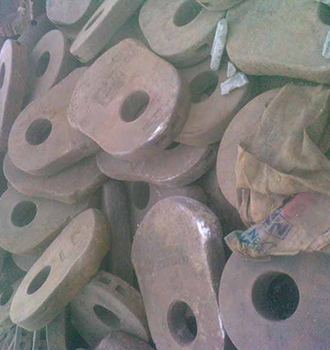Alloy Steel Scrap
Alloy steel scrap consists of waste material or discarded products made from alloy steel, which is steel mixed with other elements to enhance its mechanical properties like strength, hardness, corrosion resistance, and heat resistance. These scraps are valuable for recycling and repurposing in various industries. Below is a breakdown of its content and significance:
Composition:
- Base Material: Iron (Fe) as the primary component.
- Alloying Elements (may vary based on type):
- Chromium (Cr): Improves corrosion and wear resistance.
- Nickel (Ni): Enhances toughness and resistance to oxidation.
- Molybdenum (Mo): Increases strength and resistance to high temperatures.
- Vanadium (V): Improves hardness and fatigue resistance.
- Tungsten (W): Adds heat resistance.
- Cobalt (Co): Enhances high-temperature strength.
- Manganese (Mn): Improves toughness and wear resistance.
- Carbon (C): Affects hardness and strength.
Sources of Alloy Steel Scrap:
- Manufacturing Waste: Offcuts and by-products from machining or manufacturing.
- Obsolete Products: Worn-out or discarded tools, machinery, automotive parts, or construction materials.
- Demolition Waste: Scrap from dismantled buildings, plants, or infrastructure.
Types:
- High-Alloy Steel Scrap: Contains higher percentages of alloying elements (e.g., stainless steel, tool steel).
- Low-Alloy Steel Scrap: Lower levels of alloying elements, often used in structural applications.
Recycling Process:
- Collection and Sorting: Segregating based on alloy type and quality.
- Shredding: Reducing scrap size for easier handling.
- Melting: Smelting in furnaces to extract and refine steel.
- Purification: Removing impurities to achieve desired alloy composition.
- Recasting: Forming new steel products like bars, sheets, or other forms.
Benefits of Recycling Alloy Steel Scrap:
- Environmental Impact: Reduces mining and conserves natural resources.
- Energy Efficiency: Recycling requires less energy compared to producing new steel from raw materials.
- Cost Savings: Saves costs in raw material procurement for industries.
- Sustainability: Promotes a circular economy by reusing valuable materials.
Applications of Recycled Alloy Steel:
- Construction: Beams, girders, and reinforcing bars.
- Automotive Industry: Engine components, frames, and parts.
- Tool Manufacturing: Cutting tools, molds, and dies.
- Aerospace and Energy: Turbines, heat exchangers, and critical components.
Grades
- High Manganese steel scrap (Mn-11%, Mn-16%)
- High Chromium Steel Scrap (Cr-12%, cr-24%)
- Ni5Cr12Mo1




